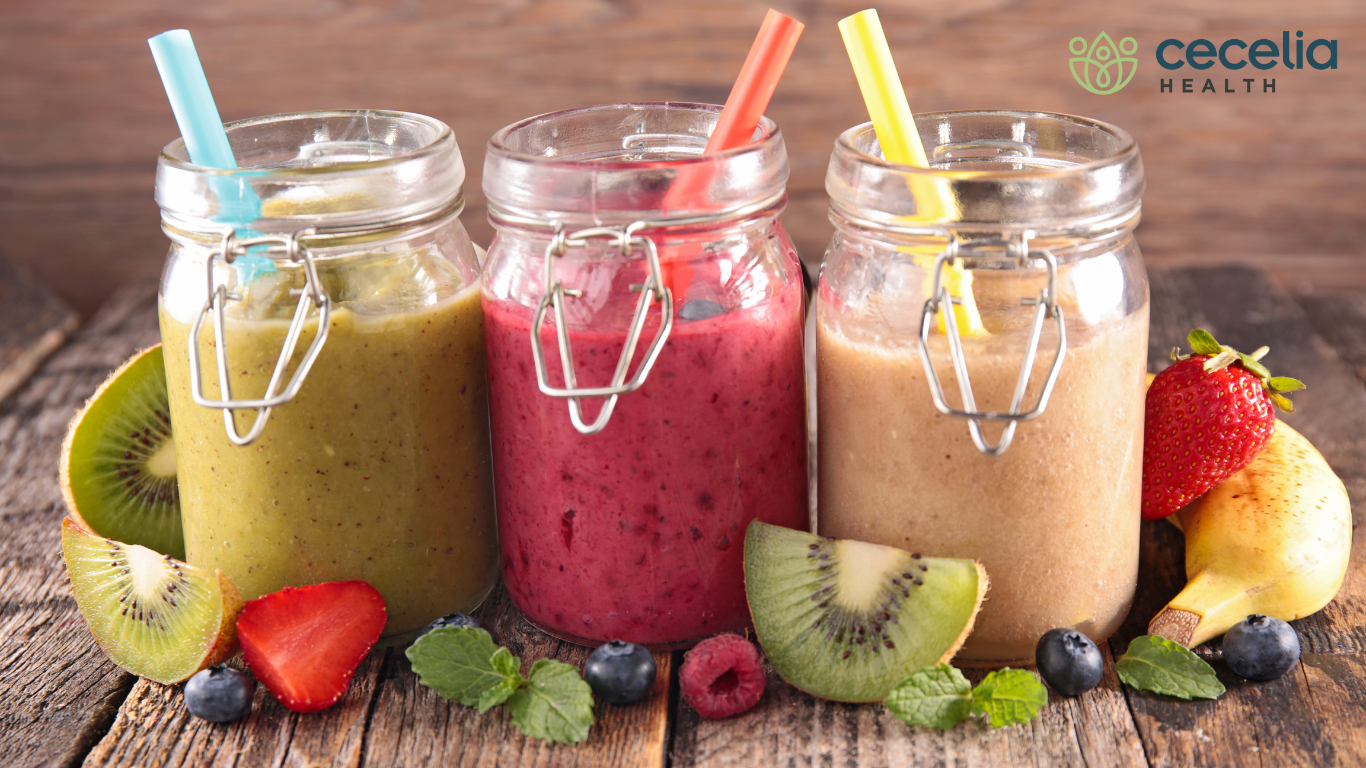When taking a GLP-1 for weight loss, it is important to eat a nutritionally balanced diet in conjunction with treatment, namely adequate protein. Getting enough protein is key to maintaining muscle mass as you lose weight, as well as supporting other essential body functions like metabolism, the immune system and more. One option to pump up the protein in your meal plan is by adding protein shakes/smoothies. When used sensibly and as part of a varied diet they can be a helpful tool. Let’s review options, benefits, and things to consider when choosing a protein shake.
Protein Shake Options
There are a variety of protein shake options to choose from currently on the market ranging from ready to drink varieties, to powders that need to be mixed with liquids (such as milk, water or juice) to ones you can make from scratch using unflavored protein powder mixed with milk/water, and add other ingredients such as fruit, vegetables, cocoa powder, nut butters and seeds. The type of protein can vary from animal-based proteins such as whey, casein and egg to plant-based options such as soy, hemp, pea or grain and nut-based. Check out this previous post which reviews protein powder choices in more detail.
Benefits of Protein Shakes
The following are some key benefits of consuming protein shakes:
- As their name implies, they are a concentrated source of protein – most commercial protein shakes, mixes and recipes offer a decent amount of protein per serving ranging from 15-30 grams. If replacing a meal, try to aim for a shake/shake recipe with at least 20 grams of protein, which is about the equivalent of a 3-ounce chicken breast.
- They are convenient, filling and can work as a potential meal replacement- protein shakes, especially the ready to drink varieties, are a quick and easy way to get your protein without much meal prep and can be consumed while on the go. Protein takes longer to digest than carbohydrates, so shakes that are protein-based can help fill you up as a meal or part of a meal.
- Protein shakes may help with nutrition intake when experiencing GLP-1 side effects- side effects such as low appetite and nausea can occur while on GLP-1s and protein shakes can be a helpful source of nutrition when you do not feel like eating much or at all. If you are nauseous, you can sip on one through a course of an hour or two to go easy on your digestion and for better tolerance. There are some clear-liquid versions that can be helpful if you are experiencing diarrhea and if you are dealing with constipation some ready-made shakes and recipes can incorporate extra fiber and fluid to help improve daily bowel function.
- They may offer additional nutrition benefits beyond protein- the liquid base of protein shakes, whether it is from water, milk, or juice can help with hydration, many contain carbohydrates, a good source of energy, as well as added vitamins and minerals for balanced nutrition. Homemade protein shakes can be a great way to add in fruits like banana, berries and melon, as well as veggies like spinach. Healthy fats from nuts and seeds can also be incorporated.
Considerations When Choosing a Protein Shake
While protein shakes do offer many benefits as part of sensible meal plan, there are some key things to consider when deciding to consume them which include:
- They may contain sugar and other undesirable additives-when choosing a protein shake, namely a ready to drink or mixable powder, it is important to check labels to view ingredients and nutrition facts. Some brands contain high levels of sugar, artificial sweeteners, vitamins/minerals and herbal ingredients that may not be in accordance with your health and weight loss goal. Choose shakes with less additives or make your own at home so you can control the ingredients.
- Protein quality and amount can vary-not all shakes and shake mixes are created equal. Some may have more protein than others per serving and some will have complete proteins with all essential amino acids like egg, whey and soy-based shakes, whereas many plant-based will be incomplete, and contain only some essential amino acids.
- They can be costly- protein shakes and mixes can be very expensive in comparison to choosing whole foods. Once you find a variety or mix you like, you can buy in bulk or make shakes at home to help with cost.
- Protein shakes are processed and should not replace whole foods entirely- while protein shakes can have a place in your daily diet, most are not considered whole natural foods and undergo some degree of processing. While they may help as meal replacements, namely when on the go, or during times of side effects, it is still important to regularly consume a varied diet based on whole foods like lean meats, poultry, fish, eggs, low fat dairy, legumes, whole grains, fruits, vegetables and nuts/seeds. If you have questions about whether protein shakes are right for you, or the best varieties to choose, consult with your healthcare team, namely a registered dietitian, about how to fit them into your daily diet.
Here is a basic healthy protein shake you can make at home! You can try different protein powders, fruit combinations and even add a tablespoon of nut butter for extra protein and healthy fat.
Ingredients:
- 1 cup skim milk, or plant-based milk
- 1 scoop of unflavored protein powder (such as whey, egg or soy)
- 1 cup of chopped fruit of your choice (banana, berries, melons work well)
- 5-6 ice cubes.
Directions: Add all ingredients to a blender and process until smooth. Pour into glass and enjoy
